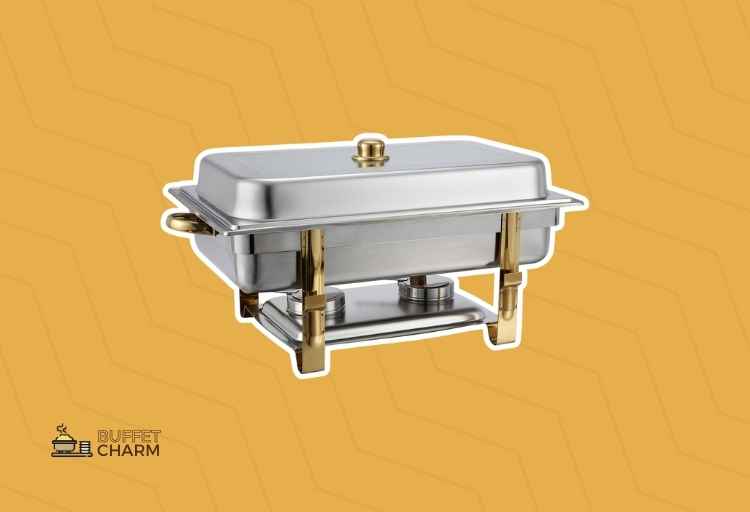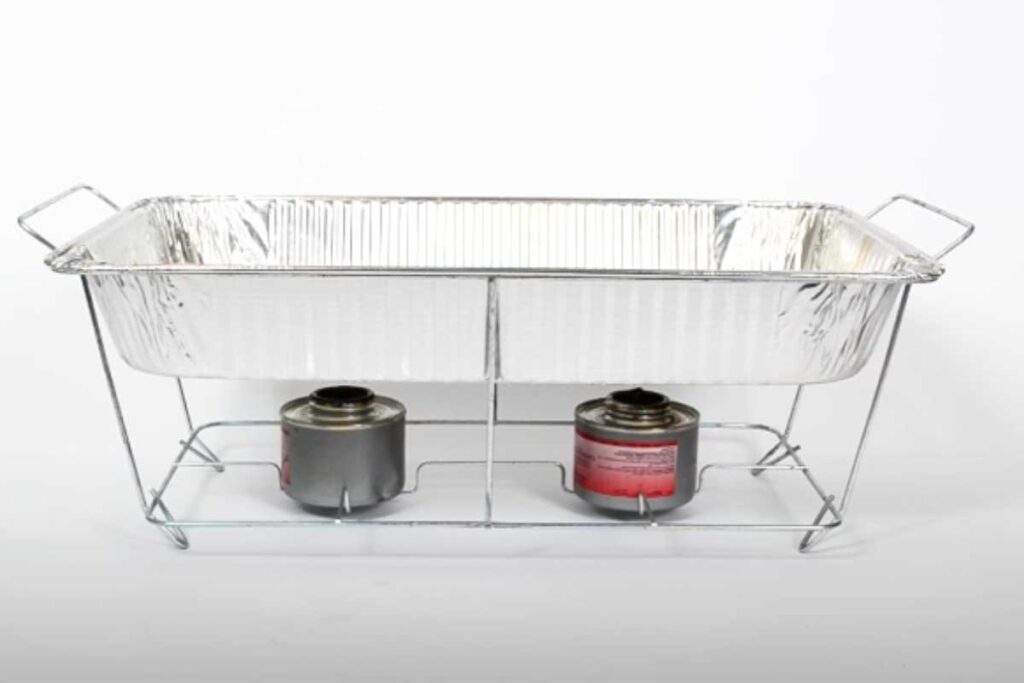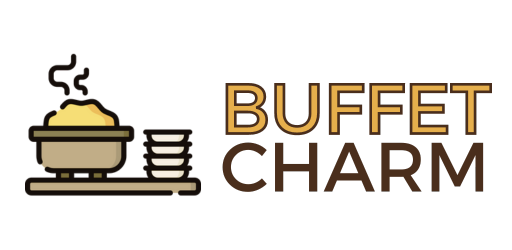How Long to Heat Chafing Dishes
You should heat the chafing dish for about 10 minutes and to do this turn on both burners and put the lid on the chafing dish.
However, if you have more food or a shorter time, you can increase the number of burners from 2 to 4.
| Heating Element | Preheat Time | Ideal Temperature |
|---|---|---|
| Sterno Cans | 5-10 minutes | 2-6 hours |
| Electric Warmers | 10-20 minutes | Until event conclusion |
Key Takeaways
- Chafing dishes are invaluable for keeping food at the right temperature during events.
- Understand the heating source’s specifics: sterno cans or electric warmers.
- Preheating, stirring, and using lids are non-negotiables for optimal heating.
- A consistent temperature above 140°F is crucial for food safety.
- Always prioritize safety, especially around open flames.

How Long to Heat Chafing Dishes?
Heating up a chafing dish can be a bit of an art, but don’t sweat it, I’ve got your back! So, to start off, if you’ve got some time to spare, you’ll want to heat that chafing dish for roughly 10 minutes.
What you do is flick on both burners and don’t forget to pop the lid on the dish. That lid’s like a superhero cape; it helps the heat stay in and do its job.
But, here’s the deal, if you’re in a bit of a hurry or you’ve got heaps of food to warm up, you might want to level up.
Switch from using just 2 burners to cranking it up to 4. More burners mean more heat, which means things will sizzle a bit faster.
So, keep these tricks up your sleeve, and you’ll be the chafing dish champ in no time!
Do You Know
The water tray acts as a buffer, preventing the food from burning or drying out while it is being heated.
Types of Heating Elements
There are mainly two types of heating elements used for chafing dishes:
- Sterno Cans: Fueled by a gel, these portable cans emanate a consistent flame. Depending on the brand and type, they can last anywhere from 2 to 6 hours, offering flexibility for various events.
- Electric Warmers: These are the modern counterparts of the traditional sterno cans. Requiring a power source, they offer unparalleled control over temperature, making them favorites for indoor events.

Factors Influencing Heating Duration
- Material of the Chafing Dish: Stainless steel, being an excellent conductor of heat, heats up faster and retains warmth longer compared to aluminum or other alloys.
- Volume and Type of Food: A chafing dish brimming with soup will need different heating considerations than one holding pasta. The fuller the dish, the longer it will typically take to heat evenly.
- Ambient Temperature and Wind: Outdoor events in chilly weather or windy conditions will likely need more vigilant heating management.
Tips for Achieving Perfect Heating
- Start with a Preheated Dish: Just as you preheat an oven, let the chafing dish achieve a warm base before adding food.
- Flame Monitoring is Key: Especially with sterno cans, observing the flame’s height ensures it’s neither too aggressive nor too weak.
- Stir for Evenness: Regular gentle stirring can prevent hot spots and ensure a uniform temperature.
- Always Use Lids: Keep the lids on when not serving. They trap heat and maintain food temperature.
- Safety First: Ensure heating elements are placed securely and are not accessible to children or pets.
How To Achieve the Perfect Temperature?
- Setup: Place the chafing dish on a flat, heat-resistant surface.
- Initiate Heating: Depending on your source (sterno or electric), ignite the can or plug in the warmer.
- Measure: Invest in a reliable food thermometer. Hot foods should be above 140°F to keep bacterial growth at bay.
- Adjust: If the temperature veers off the ideal, adjust the flame or setting on the electric warmer.
What Is the Best Way to Warm up Your Food for Party?
The best method for warming up food for a party involves strategic use of chafing dishes. Prioritize preheating the chafing dishes to maintain temperature consistency.
Another important thing is to mix the food during the heating process. If you don’t mix it and have only two burners, the food will heat up from the sides first and take much more time to properly heat up.
You can cover the chafing dish with aluminum foil to speed up the process of warming the food.
Different chafing dishes require varying heating times; ensure you account for this. Utilize chafing dishes with appropriate water and food pan depths, periodically stirring food for even heating.
Consider using portable stoves for efficient heating. Maintain food quality by covering items selectively, and preserving crispness when necessary.
Plan ahead, use available resources wisely, and ensure timely serving for a delightful dining experience.
Final Thoughts
Perfectly heated chafing dishes enhance the dining experience manifold. Investing a few extra minutes in ensuring the right temperature pays off when you see your guests relishing the warm and tasty food. Remember, the key is consistency and patience.
FAQs
Is There a Risk of Food Drying Out?
Yes, prolonged heating can dry out certain dishes. Regularly check and perhaps add a little broth or water if necessary.
Are There Eco-Friendly Sterno Alternatives?
Absolutely! There are plant-based fuel alternatives available that burn cleaner and are derived from renewable resources.
Can I Mix Different Heating Methods?
It’s best to stick to one method for consistent heating. Mixing might lead to uneven temperatures.
Can Overheating Damage the Chafing Dish?
Yes. Consistently exposing the dish to very high temperatures can wear it out faster.
How Do I Know When the Food Is Adequately Heated?
Using a food thermometer is the best way. Aim for above 140°F for hot foods.
